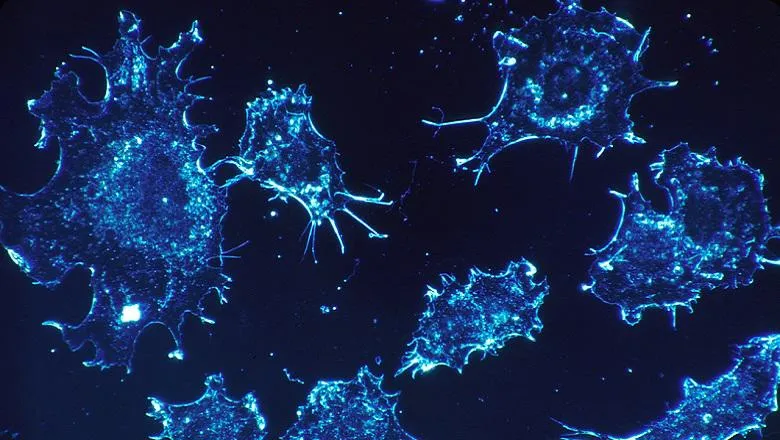Pharmaceutical companies are currently testing small molecule inhibitors of cPLA2. Based on our data, downregulating the activity of cPLA2 in tumour cells might interfere with their ability to escape the primary tumour and metastasize to distant locations.
Lead author Alexis Lomakin, from the School of Basic & Medical Biosciences
16 October 2020
New research shows how cancer cells escape crowded tumour
New findings on how the cell nucleus behaves could help to predict treatment response and metastatic spreading of tumours.

Research published today in Science, led by the Centre of Stem Cell Research & Regenerative Medicine, St. Anna Children's Cancer Research Institute Vienna, King’s College London, Institute Curie Paris, and ETH Zürich in Basel, investigates why cells in the human body attempt to escape in a crowded environment.
Cells in the human body can know how much space they need and if they are in a crowded environment most cells prefer to break free. The human body consists of trillions of cells growing in confined volumes, which often leads to cell crowding. The crowding effect is exacerbated when cell growth and proliferation are out of control during tumour formation. This creates a compressive microenvironment for the constituent cells.
The findings show that to break out, cells physically deform the nucleus which causes the nuclear membranes to unfold and stretch. These changes are detected by specialized proteins, known as Ca2+-dependent phospholipase or cPLA2, activating cellular contractility. The ability to develop contractile forces helps squeezing the cell out of its compressive microenvironment in an “evasion reflex” mechanism.
cPLA2-inhibitors prevent the production of arachidonic acid (ARA), which subsequently affects cell migration, growth, and survival. This protein could be targeted for treatment.
He continued: “For many years, pathologists have been evaluating changes in the shape of the nucleus to discriminate between different stages of tumour growth; however, how these structural-mechanical alterations of the nucleus functionally impact cancer cells remained completely unexplored.”

